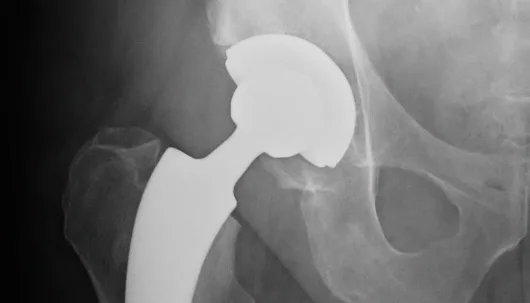
26 Feb RSA migration analysis of the cementless A2® stem published
RSA migration analysis of the cementless A2® stem published

The latest issue of Scientific Report contains the randomized RSA migration analysis of the A2® short stem system. It makes important statements about the long-term prognosis and safety of the implant. We summarize some key aspects of the study for you.
Main goal: Statements about the long-term prognosis and security based on the migration scheme
Radiostereometry analysis (RSA) is a precise method for measuring the smallest movements of an implant postoperatively. With this complex study design, reliable statements can be made about migration behavior and the process of osseointegration.
A special feature of the study: While previous RSA studies only provided for the first follow-up examinations after 3 months, the present study scheduled additional follow-up examinations after seven days and six weeks. It was found that 67% of the observed A2® short stems had reached their final position one week after the procedure and were no longer migrating. Over time, the implants showed rapid and complete stabilization and good osseointegration. “This migration pattern indicates a very good long-term prognosis and makes an important contribution to classifying the general safety of the implant,” summarizes Prof. Dr. Budde summarizes the main objective of the study.
Effect of bioactive coatings on osseointegration
The implant coating can influence the migration pattern. Therefore, the present study investigated the effects of bioactive coatings on a short stem system for the first time. Half of the 60 patients included in the study were randomly assigned to receive the A2® short stem with titanium plasma spray coating (TPS), the other half received the A2® short stem with an additional BONIT® calcium phosphate coating.
The study data shows that the additional BONIT® CP coating has no positive influence on implant migration. Interestingly, the pure TPS coating showed significantly less migration than the coated group. “Manufacturers have always used an additional coating to improve ingrowth behavior. With both coatings, the system shows good migration behavior. However, it was an unexpected result for us that we could not determine any superiority of the additional BONIT® CP coating with regard to implant migration,” explains Prof. Budde the results.
Source: Budde, S., Derksen, A., Hurschler, C. et al. Very early migration of a calcar-guided short stem: a randomized study of early mobilization and the influence of a calcium phosphate coating with 60 patients. Sci Rep14, 3837 (2024).
